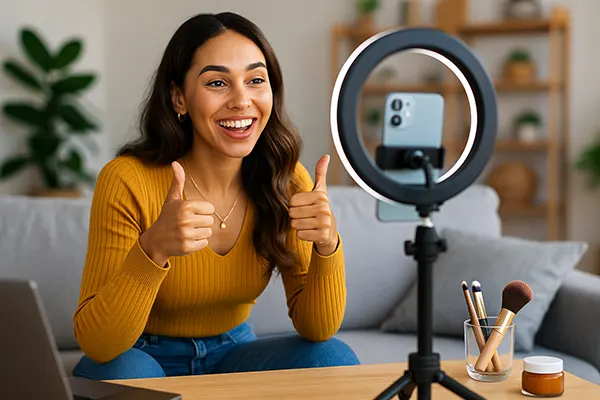Micro-Influencers on Instagram: ROI in 2025 and How to Select the Right Niche Ambassadors

In 2025, Instagram continues to dominate the social media landscape, but the way brands work with influencers has shifted. Instead of investing large sums in celebrities with millions of followers, companies are increasingly turning to micro-influencers. These individuals, often with audiences between 5,000 and 50,000 followers, have become powerful allies for brands seeking genuine engagement and measurable returns on investment (ROI). Understanding their role and knowing how to select the right ambassadors is essential for a successful digital strategy.
The Rising Value of Micro-Influencers in 2025
Micro-influencers stand out in 2025 because of their strong relationships with niche audiences. Their communities often view them as authentic voices rather than advertisers, which leads to higher trust levels compared to macro or celebrity influencers. Studies show that engagement rates among micro-influencers can be 2–3 times higher than those with larger followings, making them an effective tool for campaigns that focus on conversions rather than just visibility.
Another important factor is cost-effectiveness. Collaborations with micro-influencers typically require smaller budgets, which allows brands to spread resources across multiple individuals. This diversification not only increases reach within different micro-communities but also reduces risks compared to relying on a single personality. As a result, the ROI is often more predictable and trackable.
Technology has also played a role in their rise. Platforms now provide advanced analytics, making it easier for businesses to measure the impact of collaborations. Brands can track performance indicators such as click-through rates, sales conversions, and audience demographics, ensuring that partnerships deliver tangible results.
How Micro-Influencers Build Stronger Brand Connections
Micro-influencers typically engage with their followers through direct interactions such as comments, live sessions, and personalised responses. This creates an environment where audiences feel valued and connected to the influencer, and by extension, to the brand they promote. This organic connection translates into higher trust and loyalty.
Brands benefit from this closer relationship because audiences are more likely to act on recommendations from someone they perceive as relatable. Instead of following celebrity endorsements that may feel distant or purely transactional, consumers trust niche influencers who share similar lifestyles, values, and interests.
Furthermore, micro-influencers can adapt content to align naturally with their audience’s expectations. This reduces the risk of promotional fatigue and helps campaigns blend seamlessly into regular content, maintaining authenticity while still delivering results.
Calculating ROI from Micro-Influencer Campaigns
Measuring ROI is one of the greatest advantages of working with micro-influencers. In 2025, brands increasingly rely on detailed performance metrics to evaluate the success of partnerships. ROI is typically calculated by comparing campaign costs to the value of measurable outcomes such as sales, website visits, or lead generation.
Brands can use tracking tools like affiliate links, discount codes, and UTM parameters to attribute conversions directly to specific influencers. This transparency enables precise analysis of which partnerships generate the best returns and which require adjustments. For example, a skincare company might measure how many sales came from a single influencer’s referral code during a campaign period.
Beyond direct sales, ROI also includes long-term brand value. Campaigns with micro-influencers can enhance awareness, strengthen brand positioning within niche markets, and build consumer trust. These indirect benefits often extend beyond immediate financial gains, making micro-influencer marketing a strategic investment for sustainable growth.
Common ROI Benchmarks for Micro-Influencers
Industry benchmarks suggest that campaigns with micro-influencers often achieve a return of between 5 and 7 times the initial investment when managed effectively. This figure varies depending on the industry, with sectors like beauty, fitness, and lifestyle showing particularly strong results due to their highly engaged online communities.
Engagement rates also serve as a valuable benchmark. While large influencers may average 1–2% engagement, micro-influencers often reach 5–10%. This means that even with a smaller audience, the quality of interactions is significantly higher, which directly impacts conversion potential.
Another benchmark is cost per engagement (CPE). Brands frequently find that CPE is lower when working with micro-influencers compared to celebrity collaborations. This affordability makes campaigns scalable while ensuring that each interaction provides real value for money.

Choosing the Right Niche Ambassadors
Selecting the right micro-influencers is crucial for achieving strong ROI. Brands should start by identifying individuals whose audiences match their target demographics. This involves examining not only follower counts but also engagement quality, audience interests, and regional relevance. A perfect match ensures that promotional content resonates naturally with potential customers.
Authenticity should be prioritised over numbers. A micro-influencer with 10,000 highly engaged followers is often more valuable than someone with 50,000 passive followers. Evaluating past collaborations, content style, and the influencer’s tone helps determine whether their values align with the brand’s image and objectives.
Finally, long-term partnerships are more effective than one-off campaigns. Consistent collaborations help reinforce brand presence within a community, building recognition and loyalty. By establishing trust through repeated exposure, brands can achieve higher conversion rates and deeper relationships with their audiences.
Key Criteria When Selecting Micro-Influencers
Audience demographics are the foundation for influencer selection. Brands should ensure that an influencer’s followers match their ideal customer profile in terms of age, location, and interests. Tools like Instagram Insights provide valuable data to verify alignment.
Content quality is another important factor. Brands should look for influencers who consistently produce high-quality visuals, clear messaging, and authentic storytelling. These elements increase the credibility of campaigns and enhance their effectiveness.
Reliability and professionalism should also be considered. Influencers who meet deadlines, communicate clearly, and comply with regulations (such as disclosing paid partnerships) demonstrate the professionalism required for successful long-term collaborations.
